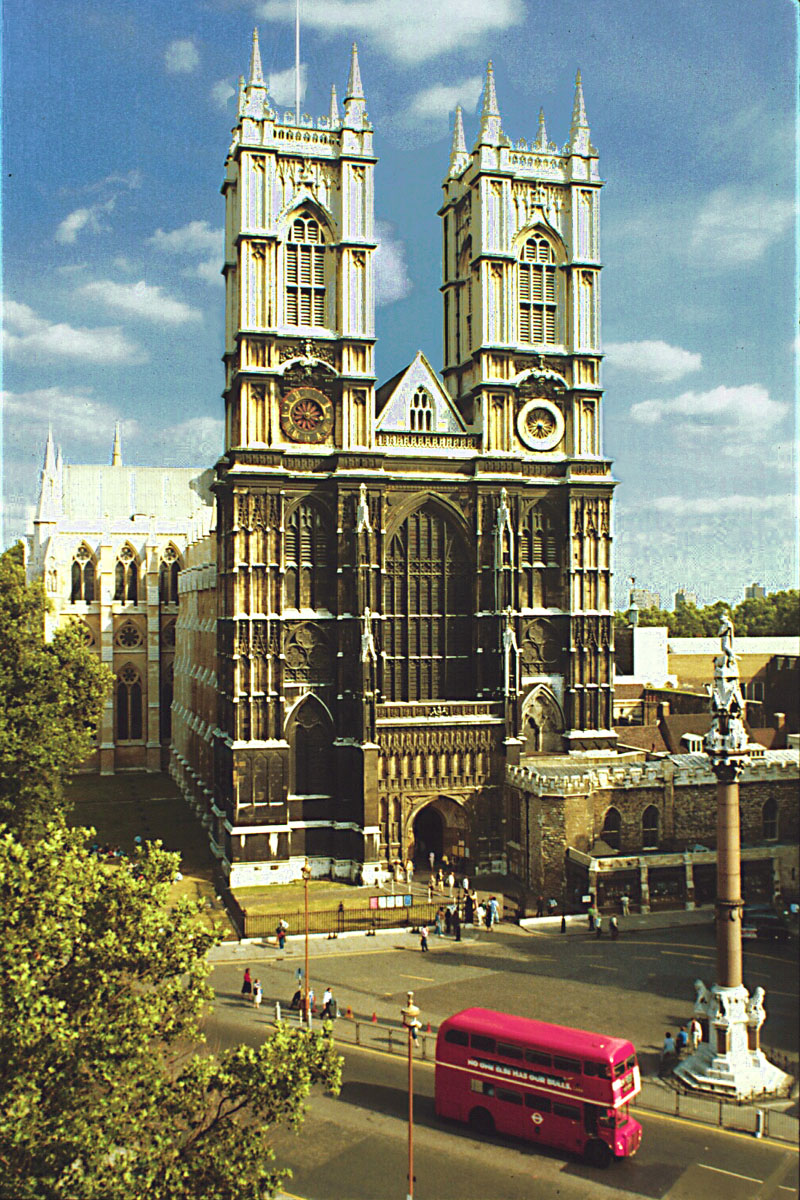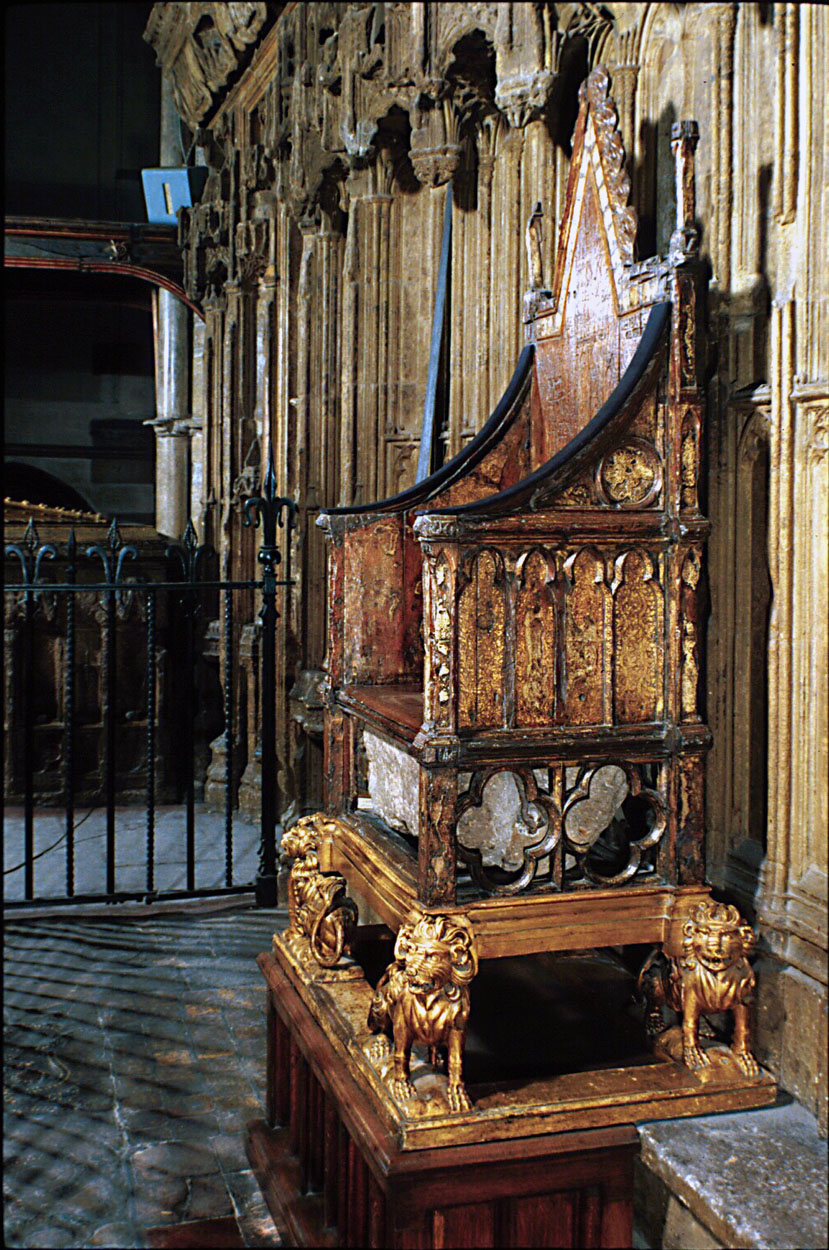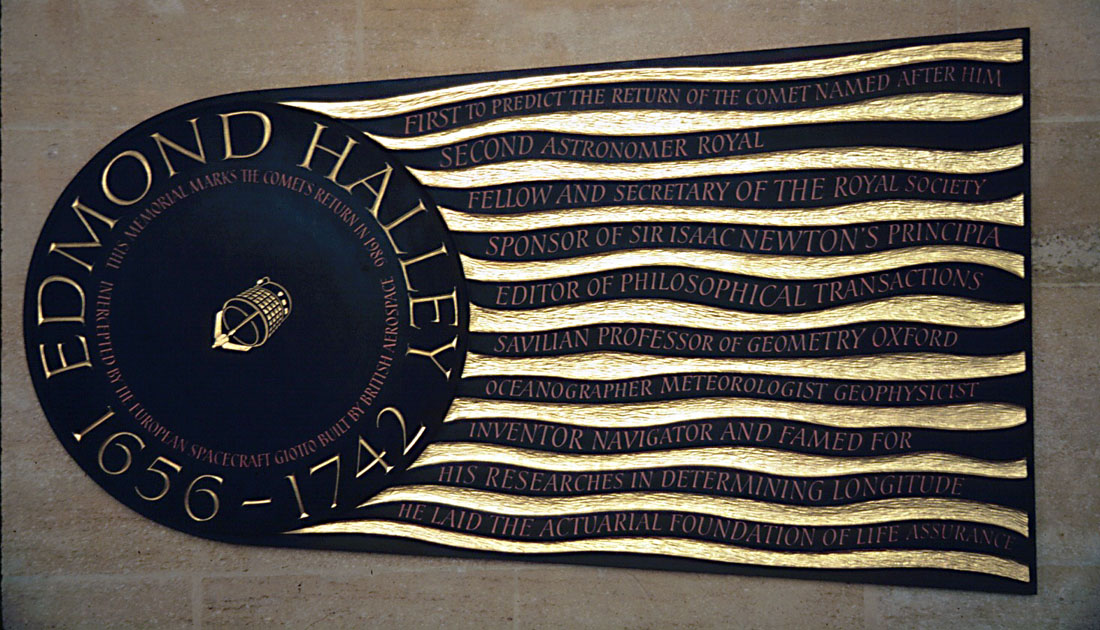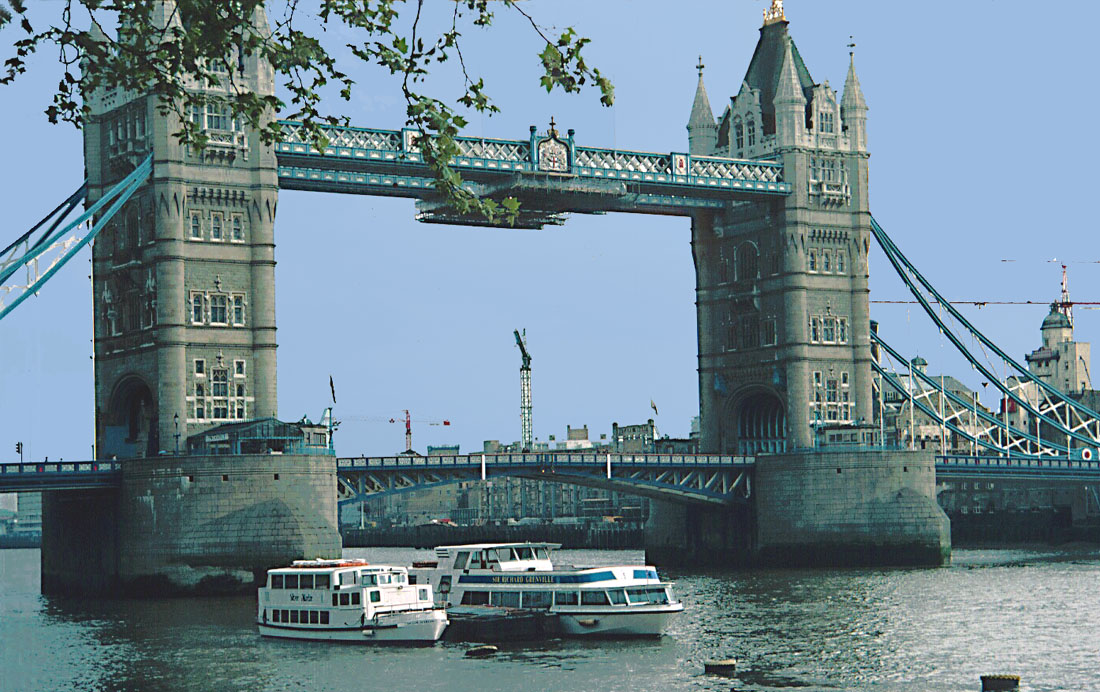|

Westminster Abbey
(photo by Woodmansterne, Limited)
|
|
|
|

Coronation Chair in Westminster Abbey.
The stone beneath the chair is the Stone of Scone which was originally
used for coronation of Scottish kings. The English moved it to London
after a battle and it was still here when I visited the Abbey in 1987. It
has only recently been returned to Scotland. |
|
|
|

Monument to astronomer Edmund Halley in
Westminster Abbey. The comet that bares his name returned in 1066 AD when
Harold II was defeated by William the Conqueror at the Battle of Hastings.
This marked the end of the Anglo-Saxons and the beginning of the Norman
reign. |
|
Tower Bridge
This is a movable bridge of the double-leaf bascule (drawbridge) type that
spans the Thames River between the Greater London boroughs of Tower
Hamlets and Southwark. It is a distinct landmark that aesthetically
complements the Tower of London, which it adjoins.
The bridge was completed in 1894 and provides an opening 250 feet (76
metres) wide. Its twin towers rise 200 feet (61 metres) above the Thames.
Between the towers stretch a pair of glass-covered walkways that are
popular among tourist. |
| |
|

Tower Bridge |
|
The Tower of London
The Tower was established by William the Conqueror and for most of its
long haunting history has been a prison and or an armory. It was here that
Henry V111 had two of his wives executed. It has many legends including
that of the ravens - for if they were to fly away the kingdom would fall.
The is protected by the colorful yeoman wardens. It houses the spectacular
crown jewels.
|
|

Tower of London
|
|

The Tower of London's "Traitors' Gate"
|
|
Greenwich Observatory
Greenwich, England , in the borough of Greater London, lies
on the southern bank of the Thames River, near London . The borough was
formed in 1965 with the merging of the former metropolitan boroughs of
Greenwich and Woolwich. Among the landmarks of Greenwich is the Royal
Naval College, the National Maritime Museum and the Greenwich Observatory.
The observatory is at as the site of the prime meridian, or 0° longitude.
This is the starting point for the earth's longitude markers and is used
as the standard for Universal Time in astronomical reports. |
| |
|

The Greenwich Observatory -- "Where time
begins".
This marks the zero meridian, dividing the earth into eastern and wetern
hemispheres.
|